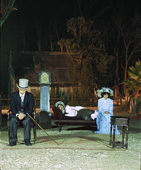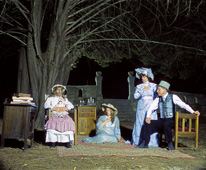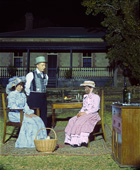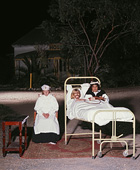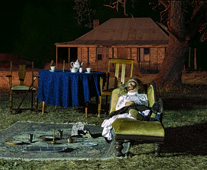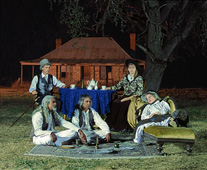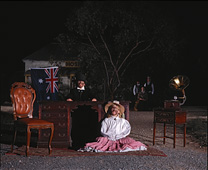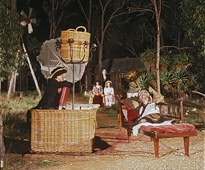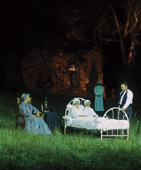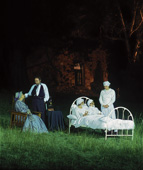"I am fascinated by children from indigenous backgrounds who are fair skinned, and desire to be brown."
"Noah my son discovered that there were a variety of skin colour variations between many of the people he had developed relationships with.
Eventually he would ask us questions like “Why has Nanna got brown skin?” Noah - like many other children like him - had realised that there are various different shades of melanin in people, he also realised that his own skin colour was fair. His realisation of the contrast between him and brown skinned people lead to him to say to his mother “Mum I want to be Brown”. I am fascinated by this for 2 reasons. Firstly: that he said this. Secondly: That he decided that being brown would be better than being fair. I can only assume due to his age that his decision is based on pure aesthetics.
At the other end of the age spectrum I am also fascinated by fair skinned non indigenous people when they’re a little embarrassed with their own shade of melanin, - for example when they are at the pool or beach. Furthermore while in their slightly embarrassed state come out with comments like “’Look how white I am, I need a tan” or “It’s not fair’, your browner than me”.
Certainly I am fascinated by the fact that there seems to be a cultural milieu that desires to be brown, to be – at minimum - a light shade of brown. However I do wonder as to what extent they would desire being brown. Would their desire to be brown end at a particular shade of Melanin, or would it not matter? Would their desire to be brown end if being brown was only a natural phenomenon, or would they prefer being brown naturally?
I think that in the mind of a child, desiring to be brown is being brown unreservedly, that is, no restrictions or conditions are applied. However, I can’t imagine this would be true for the majority of adult Australians, given they would have been exposed to at least some historical knowledge of and had some social conditioning towards indigenous Australian Aboriginal people. I think because of this exposure it would be harder to disassociate the negative baggage that has long been coupled with Indigenous Aboriginal people and their communities. In contrast I think that children have the luxury of being oblivious to this historical knowledge and oblivious to the present negative thinking regarding the generalised Aboriginal people of Australia, simply because they have not been culturally/socially saturated enough for long enough. Furthermore I think that at some stage a child’s equilibrius state regarding the aesthetic desire to be brown will be compromised, thus forcing them to re-evaluate there thinking.
In creating this body of work I have tried looking through the mind of Children who view that being brown is far more preferable and desirable. I have looked to accentuate this difference by creating works set in a period when the Australian cultural milieu visioned and enforced a mono-cultural society different to that which is in the minds of these children. I think this work contrasts children’s innocence with an adult baggage. Also, I think that this contrast between them also accentuates a pressure to conform and adopt the social norms held during the period. Yet despite the pressure that these children are enduring, they are showing resilience in having to bend to these pressures, perhaps even daring the milieu to shift from their firmly planted position and redefine the boundaries of the social norms.
In this body of work I have also looked to create home interiors in the exterior environment. To me I see it as an allegory regarding private interior thoughts and public revelations, and what we wish to present to others despite these private thoughts. Also, regarding the interior, in some ways I think our furniture exudes our position and place within society, maybe it even plays a part in determining the level of synergy we have within it. And to a degree may highlight the value that we place in fitting in to that society".
Darren Siwes, 2008
All images are courtesy the artist and greenaway art gallery, adelaide
|
|
|
|
|
|
|
|
|
|
- TURNER GALLERIES | showcasing contemporary art
at 470 WILLIAM STREET NORTHBRIDGE WESTERN AUSTRALIA 6003 - TURNER GALLERIES HAS NOW CLOSED.
This website is an archived record of the exhibitions and artwork shown at the gallery. - Turner Galleries acknowledges the Whadjuk Nyoongar people as the Traditional Owners of the lands and waters where Turner Galleries is situated, and pay our respect to Elders past, present and emerging.
- Website © 2000-2024 TURNER GALLERIES. All images are © the artists and are not to be used without permission.
- This is a millapede project.
